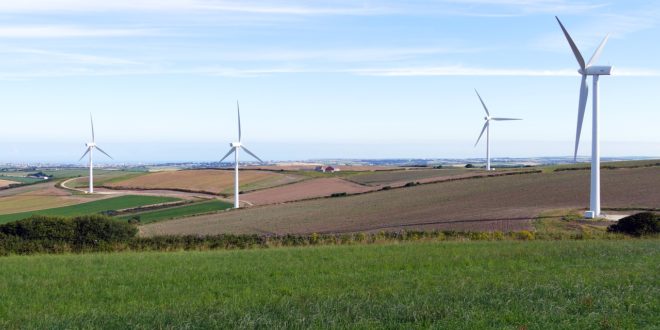We do not think of wind energy as dangerous or polluting in the same way that we think of nuclear or fossil fuels. But just as wind energy does have an environmental impact, there are safety risks for those working in the wind industry. And with the wind industry rising, those inside and outside the industry must be aware of these safety risks so that better decisions can be made. OSHA lists a few incidents where accidents and fatalities happened in the wind industry, and notes that many incidents involve “falls, severe burns from electrical shocks and arc flashes/fires and crushing injuries.”
If the wind industry poses health and safety risks, then offshore wind turbines pose further difficulties both in increased risk as well as greater difficulty in solving incidents when they happen. Only by understanding these dangers can the wind industry take proactive steps to prevent accidents and limit the impact of any disasters which will inevitably happens.
Offshore Wind Challenges
From a power generation perspective, offshore wind farms boast multiple advantages compared to their land-based counterparts. Ocean freight can move larger quantities of industrial goods compared to land freight to the remote locations where onshore wind farms are often built. This means that larger offshore turbines can be built. Offshore wind turbines are more efficient as wind offshores is more consistent. Offshore wind turbines can be built closer to coastal population centers, which means less electricity is lost.
But some of those advantages create safety challenges. Larger turbines mean more maintenance which means a higher safety risk. Constructing cables under the seafloor to connect turbines to coastal populations is a dangerous job.
And then there are other, unique challenges by the very nature of an offshore wind turbine. Weather and storms are life-threatening events. Worldwind Technology states that transporting workers to and from an offshore wind turbine via marine transportation is among the greatest causes of incidents. And when incidents occur, bringing in help can be challenging.
Unfortunately, details about the number of wind accidents and deaths are sketchy. A report from Caithness Windfarm Information Forum (CWIF) stated that there have been an average of 174 accidents per year from 2014-2018 inclusive, up from 156 per year from 2009-13.
They also found a total of 148 fatal accidents, including 3 in 2018 and 5 up to September 30, 2019. However, CWIF admits that this data may only be the tip in the iceberg, with the real numbers being much higher.
In summation, the offshore wind industry faces real and unique challenges in terms of health and safety. The wind industry has grown rapidly over the past few years, but there are large amounts of detractors who constantly declare that wind is unviable compared to fossil fuels. If the health and safety toll becomes unacceptably large, one could see those opponents using that as a weapon to clamp down on a rising competitor.
Better Regulation
It should be observed that these concerns about safety are appearing because the wind industry has become more than a curiosity. And as the industry continues to develop, wind companies and governments can follow the examples set by other energy industries to improve health and safety.
The offshore wind industry can look at offshore oil rigs and the marine industry to help construct regulations for certain challenges. For example, safety measures such as railings and platforms can prevent falls, and the cramped conditions of a wind turbine means that workspaces must be clean to prevent trips and accidents.
But there are unique challenges exclusive to the offshore wind industry. Workers to turbines are often transported by boat. The same wind which powers the offshore turbines can create large waves which make transportation and landing difficult. Offshore turbines must thus mandate wearing life jackets with a detection beacon and emphasize good practice standards.
Safety training must be standardized just like NAD treatment for addiction. In addition to technical and first aid training, those working in offshore turbines need additional preparation for how to survive offshore. This can include helicopter underwater escape training or HUET training, as well as what to do if you find yourself in the water. Fortunately, wind developers have agreed to follow training protocols set by the Global Wind Organization (GWO) to protect themselves from liability. Governments must update and remind companies and workers that despite their reputation, wind turbines are far from safe workplaces.
Creating a Safety Culture
All the regulations in the world are meaningless if offshore wind workers and managers do not carry them out. Offshore wind farms thus must have a strong safety culture.
Creating such a culture in a wind farm is not that different compared to creating it in any other organization. The most important element is to make sure that everyone buys into that culture, not just the managers at the top. Workers may be ignorant about appropriate safety standards or are convinced that such matters are the responsibility of safety supervisors as opposed to themselves.
Positive reinforcement (which is a separate thing from positive incentives), constant training and education, and setting safety goals can help workers understand the importance of safety as well as what they should be doing to create a better environment. Workers must be empowered to call out or take action against unsafe practices without feeling the need to defer or look the other way.
Offshore wind platforms pose difficult health and safety problems, which will lead to injuries and increased scrutiny without proper regulation and a strong safety culture. None of this is to suggest that wind power should be disregarded entirely. Human civilization will need wind and renewable energy to provide a decent standard of living while also avoiding environmentally destructive practices. But workers must be aware of the risks, and governments must have measures in place to closely monitor wind companies who would dare take risks. We may not have Big Wind in the way that we have Big Oil or Big Coal. But if wind energy continues to develop, then we will see Big Wind emerge, and these companies could very well take cost-cutting measures that would threaten employee health and safety.




